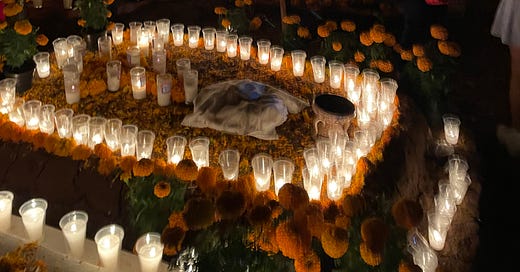Dia de Muertos
Just don't call it Day of the Dead—a trip to Michoacán. Plus movie and book recommendations, and links.
Tell me, what is your impression, right now, of the “Day of the Dead”? Dia de Muertos (literally “Day of Souls”).
Me, I’ve known about it generally for years without really knowing what it was actually about. If you’d asked me to envision it a week ago, my mind would have retrieved the spooky opening of the James Bond movie, Spector, a parade of people …
Keep reading with a 7-day free trial
Subscribe to Ruhlman's Newsletter to keep reading this post and get 7 days of free access to the full post archives.




